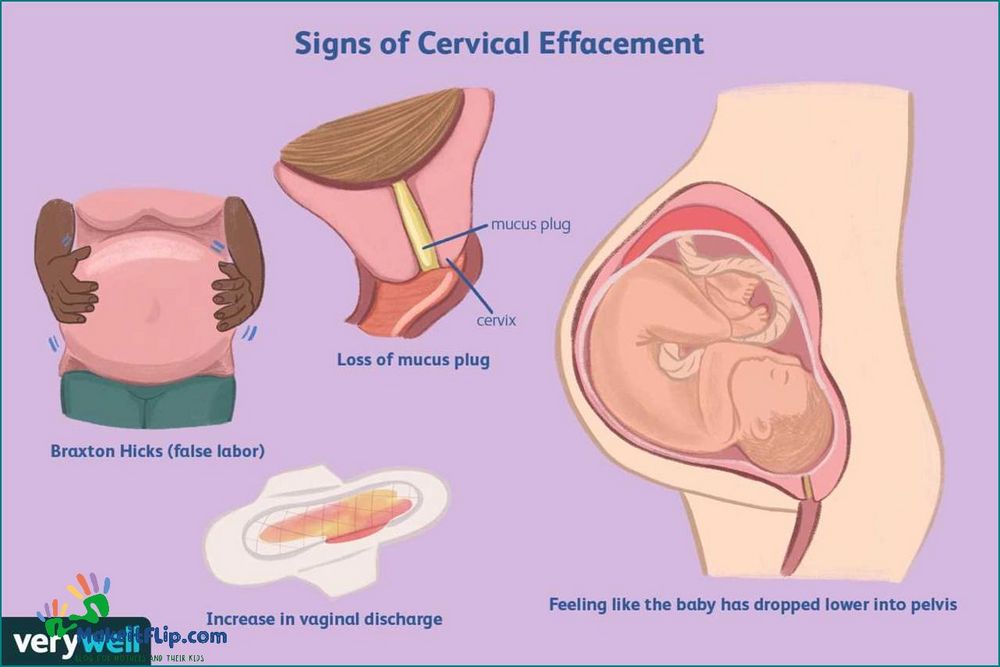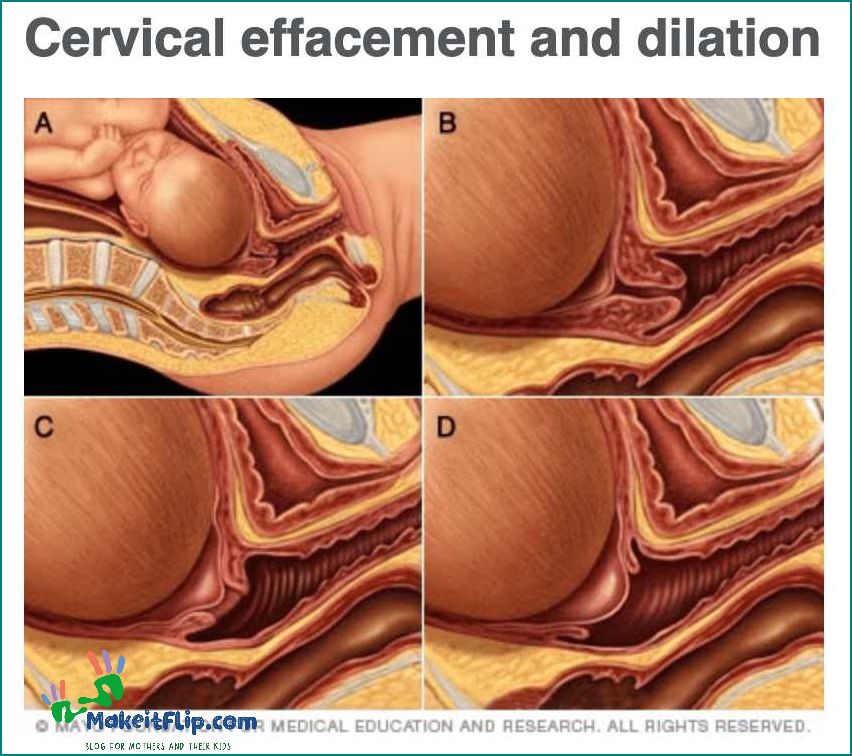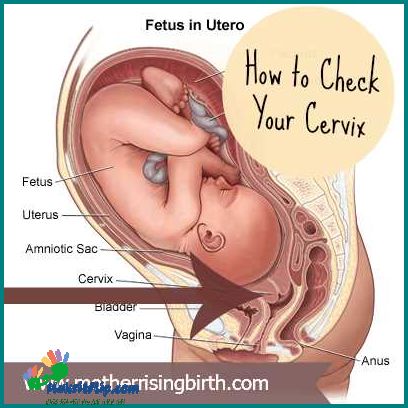Contents
- 1 The Significance of Cervix Check at 36 Weeks for Expectant Mothers
- 1.1 Understanding the Importance of Cervix Check
- 1.2 Preparing for a Cervix Check
- 1.3 FAQ about topic Why Cervix Check at 36 Weeks is Important for Pregnant Women
- 1.3.1 Why is it important to check the cervix at 36 weeks of pregnancy?
- 1.3.2 What does it mean if the cervix is dilated at 36 weeks?
- 1.3.3 What happens during a cervix check at 36 weeks?
- 1.3.4 Are there any risks or discomfort associated with a cervix check at 36 weeks?
- 1.3.5 What can the results of a cervix check at 36 weeks tell me about my pregnancy?
- 1.3.6 Why is it important to check the cervix at 36 weeks?
- 1.3.7 What does it mean if the cervix is soft and dilated at 36 weeks?
- 1.3.8 What are the risks of preterm labor at 36 weeks?
The Significance of Cervix Check at 36 Weeks for Expectant Mothers

During pregnancy, regular check-ups with healthcare providers are crucial to ensure the well-being of both the mother and the baby. One important aspect of these check-ups is the cervix check, which is typically performed around the 36th week of pregnancy.
The cervix is the lower part of the uterus that connects to the vagina. It plays a vital role in pregnancy and childbirth. Checking the cervix at 36 weeks allows healthcare providers to assess its condition and make important decisions regarding the delivery process.
By checking the cervix, healthcare providers can determine if it is dilating or effacing. Dilation refers to the opening of the cervix, while effacement refers to the thinning of the cervix. These measurements provide valuable information about the progress of labor and help healthcare providers plan for a safe and smooth delivery.
In addition to assessing the cervix, healthcare providers may also perform other tests during the 36-week check-up, such as checking the baby’s position and measuring the mother’s blood pressure. These comprehensive evaluations help ensure that both the mother and the baby are healthy and ready for childbirth.
Understanding the Importance of Cervix Check

During pregnancy, it is important for healthcare providers to regularly check the cervix, especially at 36 weeks. This check is done to assess the readiness of the cervix for labor and delivery.
The cervix is the lower part of the uterus that connects to the vagina. It plays a crucial role in pregnancy and childbirth. As the due date approaches, the cervix starts to soften, thin out, and open up, a process known as cervical ripening. Checking the cervix at 36 weeks allows healthcare providers to evaluate the progress of cervical ripening and determine if the body is preparing for labor.
By examining the cervix, healthcare providers can gather important information about the pregnancy. They can determine if the cervix is effaced (thinned out) and dilated (opening up). This information helps them assess the likelihood of preterm labor or the need for induction of labor. It also helps them plan for the appropriate course of action during delivery.
Additionally, a cervix check at 36 weeks can help identify any potential complications or issues that may require medical intervention. For example, if the cervix is not ripening or opening up as expected, it could indicate a problem that needs further investigation or treatment.
Overall, regular cervix checks at 36 weeks provide valuable insights into the progress of pregnancy and help healthcare providers make informed decisions about the management of labor and delivery. It is an essential part of prenatal care and ensures the well-being of both the mother and the baby.
Monitoring Cervical Progression

At 36 weeks of pregnancy, it is important for healthcare providers to check the cervix to monitor its progression. The cervix is the lower part of the uterus that opens up to allow the baby to pass through during childbirth. Checking the cervix at this stage can provide valuable information about the readiness of the cervix for labor.
During the check, the healthcare provider will assess the cervix for changes in its position, length, and dilation. These measurements can indicate whether the cervix is starting to soften and thin out (efface) and whether it is beginning to open (dilate). Monitoring the cervical progression can help determine if the body is preparing for labor and if there are any potential issues that need to be addressed.
By checking the cervix at 36 weeks, healthcare providers can identify any potential risks or complications that may arise during labor. For example, if the cervix is not dilating or effacing properly, it may indicate a need for medical intervention, such as induction of labor. On the other hand, if the cervix is already dilated or effaced significantly, it may suggest that the woman is at risk of preterm labor.
Regular monitoring of cervical progression can also help healthcare providers make informed decisions about the timing of interventions, such as membrane sweeping or cervical ripening, to help facilitate a smoother labor and delivery. It allows them to assess the progress of the cervix and make appropriate recommendations based on the individual needs of the pregnant woman.
In conclusion, monitoring cervical progression at 36 weeks is an important part of prenatal care. It provides valuable information about the readiness of the cervix for labor and helps healthcare providers identify any potential risks or complications. Regular checks allow for timely interventions and ensure the best possible outcome for both the mother and the baby.
Assessing Risk of Preterm Labor

At 36 weeks of pregnancy, assessing the risk of preterm labor becomes crucial for pregnant women. One of the ways to evaluate this risk is by checking the cervix.
The cervix is the lower part of the uterus that connects to the vagina. It plays a vital role in pregnancy as it keeps the fetus inside the uterus until it is ready to be born. Checking the cervix at 36 weeks allows healthcare providers to determine its length, consistency, and dilation.
A shorter cervix, which measures less than 25 millimeters, can indicate an increased risk of preterm labor. This is because a shorter cervix may not be able to support the weight of the growing fetus, leading to premature birth. Additionally, a soft and thin cervix may also suggest a higher risk of preterm labor.
By assessing the cervix at 36 weeks, healthcare providers can identify women who are at a higher risk of preterm labor. This allows for appropriate interventions and management strategies to be implemented, such as cervical cerclage or progesterone supplementation, to help prevent preterm birth.
Overall, the cervix check at 36 weeks is an important tool in assessing the risk of preterm labor in pregnant women. It provides valuable information that can guide healthcare providers in making informed decisions to ensure the well-being of both the mother and the baby.
Planning for Delivery

As you approach the 36-week mark of your pregnancy, it is important to start planning for delivery. One crucial aspect of this planning process is to check your cervix. The cervix is the lower part of the uterus that opens up to allow the baby to pass through during childbirth.
At 36 weeks, your healthcare provider may perform a cervix check to assess its readiness for labor. This involves examining the cervix to determine its position, length, and dilation. The information gathered from this check can help your healthcare provider estimate when you may go into labor.
Knowing the status of your cervix can also help you make important decisions regarding your birth plan. For example, if your cervix is already dilated and effaced, it may indicate that labor is imminent, and you should be prepared to go to the hospital or birthing center. On the other hand, if your cervix is closed and long, it may indicate that you still have some time before labor begins.
Additionally, a cervix check at 36 weeks can provide valuable information about the position of the baby. If the baby’s head is low and engaged in the pelvis, it is a good sign that the baby is in the optimal position for delivery. However, if the baby is still high and not engaged, it may indicate the need for further monitoring or interventions to encourage proper positioning.
Overall, a cervix check at 36 weeks is an important step in the planning process for delivery. It allows you and your healthcare provider to gather essential information about the readiness of your cervix and the position of the baby. This knowledge can help you make informed decisions and be better prepared for the upcoming birth of your child.
Preparing for a Cervix Check

As you approach 36 weeks of pregnancy, your healthcare provider may recommend a cervix check. This is an important procedure that allows your provider to assess the progress of your pregnancy and determine if you are at risk for preterm labor.
Before the check, it is important to mentally prepare yourself. The cervix check can be uncomfortable or even slightly painful for some women, so it is helpful to take deep breaths and try to relax during the procedure.
It is also a good idea to empty your bladder before the check, as a full bladder can make the procedure more uncomfortable. Additionally, wearing comfortable clothing and bringing a support person with you can provide comfort and reassurance during the check.
During the check, your healthcare provider will use a gloved hand to gently insert two fingers into your vagina and feel your cervix. They will assess the position, length, and dilation of your cervix to determine if any changes have occurred. This information can help your provider make decisions about your pregnancy and potential interventions if necessary.
Remember, the cervix check is a routine part of prenatal care and is done to ensure the health and well-being of both you and your baby. If you have any concerns or questions about the procedure, be sure to discuss them with your healthcare provider.
Discussing the Procedure with Your Healthcare Provider

When you reach 36 weeks of pregnancy, your healthcare provider may recommend a cervix check. It is important to have a discussion with your healthcare provider about this procedure to understand why it is being done and what to expect.
A cervix check involves the healthcare provider manually examining your cervix to assess its readiness for labor. This can help determine if you are at risk for preterm labor or if you may need interventions to prevent complications.
During the discussion with your healthcare provider, you can ask questions about the procedure, such as why it is necessary at 36 weeks and what information it will provide. You can also inquire about any potential risks or discomfort associated with the cervix check.
It is important to communicate any concerns or fears you may have about the procedure. Your healthcare provider can address these concerns and provide reassurance. They can also explain the potential benefits of the cervix check and how it can help ensure the health and safety of both you and your baby.
By discussing the procedure with your healthcare provider, you can gain a better understanding of why the cervix check is important at 36 weeks of pregnancy. This knowledge can help you make informed decisions about your prenatal care and ensure the best possible outcome for you and your baby.
FAQ about topic Why Cervix Check at 36 Weeks is Important for Pregnant Women
Why is it important to check the cervix at 36 weeks of pregnancy?
Checking the cervix at 36 weeks of pregnancy is important because it helps healthcare providers assess the progress of labor and determine if the cervix is dilating and effacing. This information can help them determine if the woman is likely to go into labor soon or if there are any potential complications that need to be addressed.
What does it mean if the cervix is dilated at 36 weeks?
If the cervix is dilated at 36 weeks of pregnancy, it means that the opening of the cervix has started to widen in preparation for labor. This is a normal part of the labor process, but it does not necessarily mean that labor will start immediately. The degree of dilation can vary, and healthcare providers will monitor the progress to determine when labor is likely to begin.
What happens during a cervix check at 36 weeks?
During a cervix check at 36 weeks of pregnancy, a healthcare provider will insert two fingers into the vagina and gently feel the cervix. They will assess the cervix for dilation, which is the opening of the cervix, and effacement, which is the thinning of the cervix. This information helps them determine the progress of labor and if there are any potential complications.
Are there any risks or discomfort associated with a cervix check at 36 weeks?
A cervix check at 36 weeks of pregnancy is generally safe and discomfort is minimal. However, some women may experience mild discomfort or pressure during the procedure. There is a small risk of infection, but healthcare providers take precautions to minimize this risk, such as using sterile gloves and instruments.
What can the results of a cervix check at 36 weeks tell me about my pregnancy?
The results of a cervix check at 36 weeks of pregnancy can provide valuable information about the progress of labor and the likelihood of going into labor soon. If the cervix is dilated and effaced, it may indicate that labor is imminent. If there are any concerns or complications, healthcare providers can address them and provide appropriate care.
Why is it important to check the cervix at 36 weeks?
Checking the cervix at 36 weeks is important because it can provide valuable information about the progress of the pregnancy. It can help determine if the cervix is beginning to soften and thin out (efface) in preparation for labor, and if it is starting to dilate (open). This information can help healthcare providers assess the likelihood of preterm labor and make appropriate management decisions.
What does it mean if the cervix is soft and dilated at 36 weeks?
If the cervix is soft and dilated at 36 weeks, it could be a sign that labor is approaching. Softening and dilation of the cervix are important changes that occur in the weeks leading up to labor. However, it is important to note that every pregnancy is different, and some women may not experience these changes until closer to their due date. It is always best to consult with a healthcare provider for an accurate assessment.
What are the risks of preterm labor at 36 weeks?
Preterm labor at 36 weeks can pose certain risks for both the mother and the baby. For the mother, it can increase the likelihood of complications during labor and delivery, such as infection or excessive bleeding. For the baby, being born prematurely can lead to respiratory problems, feeding difficulties, and an increased risk of developmental delays. It is important for healthcare providers to monitor the cervix and take appropriate measures to prevent or manage preterm labor.
I’m Diana Ricciardi, the author behind Makeitflip.com. My blog is a dedicated space for mothers and their kids, where I share valuable insights, tips, and information to make parenting a bit easier and more enjoyable.
From finding the best booster seat high chair for your child, understanding the connection between sciatica and hip pain, to exploring the benefits of pooping in relieving acid reflux, I cover a range of topics that are essential for every parent.
My goal is to provide you with practical advice and solutions that you can easily incorporate into your daily life, ensuring that you and your child have the best possible experience during these precious years.
